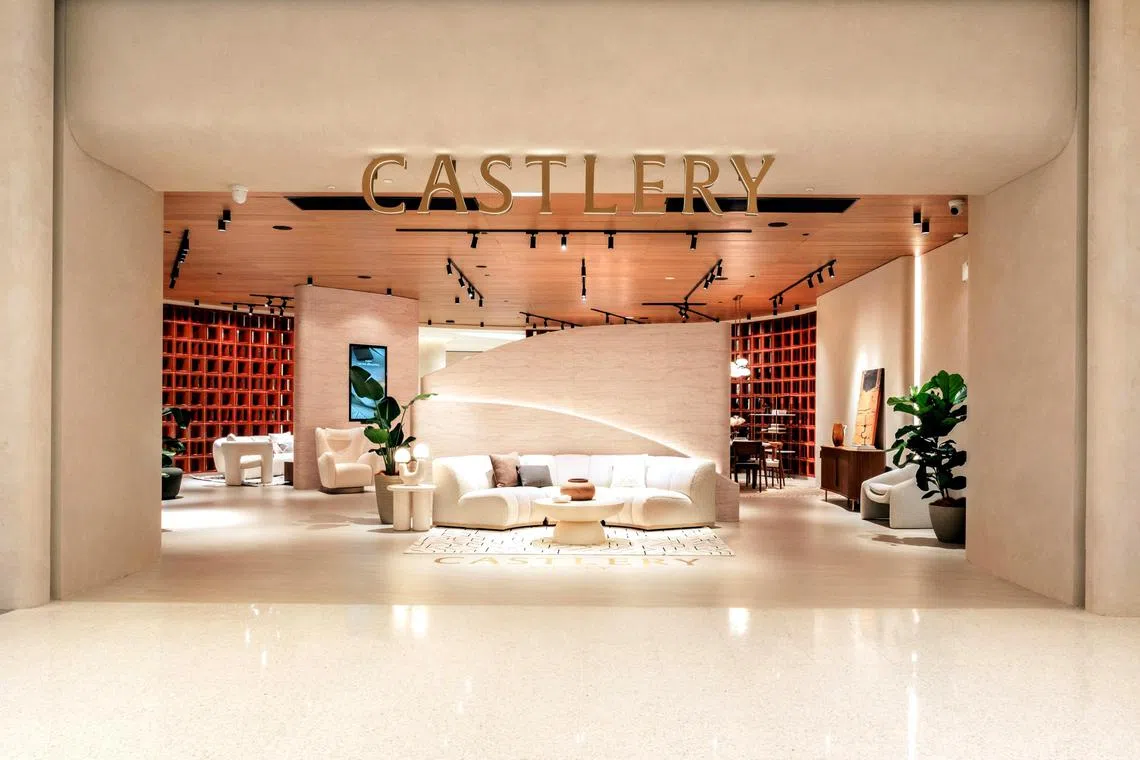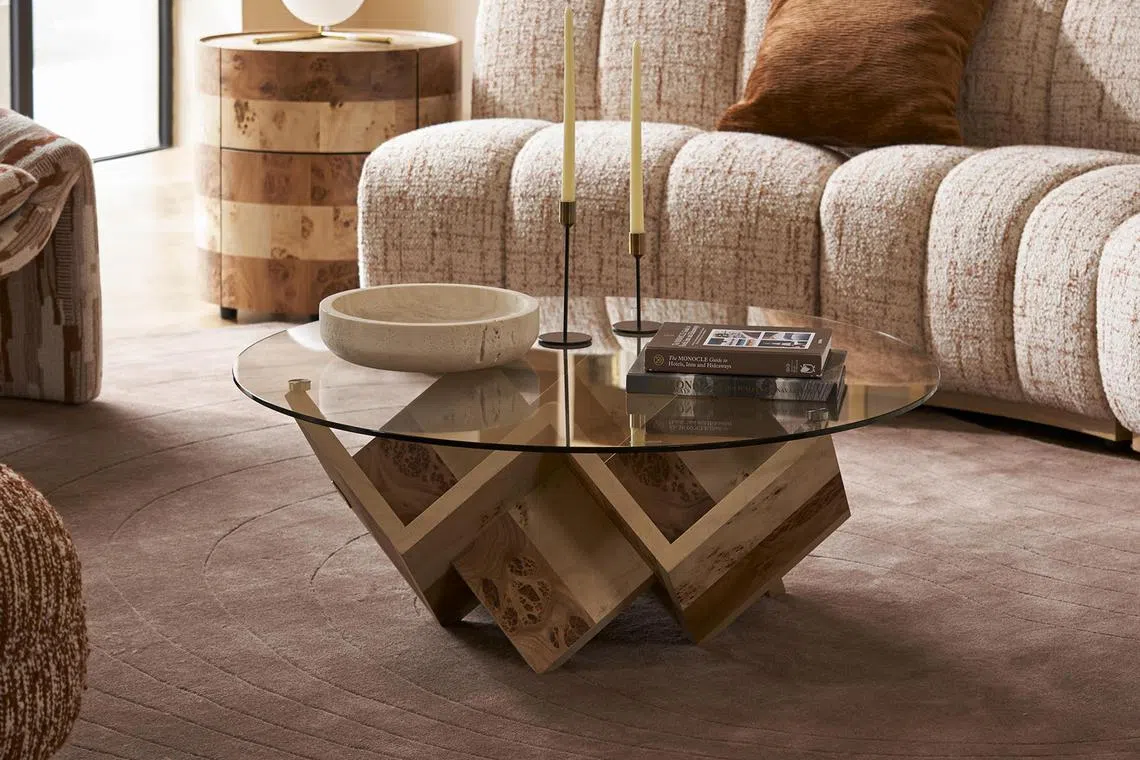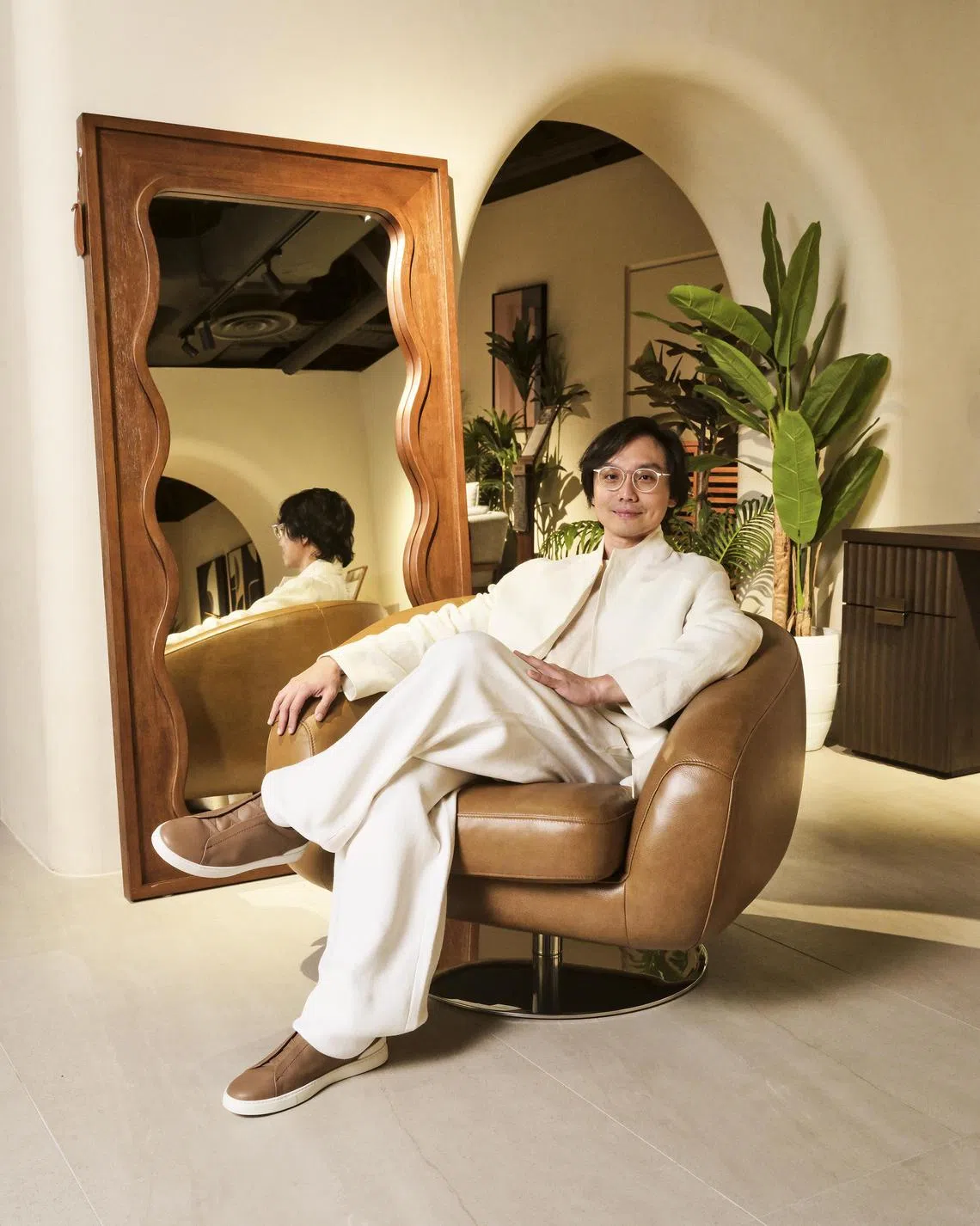Declan Ee: Designing across continents
Despite numerous hurdles, Castlery’s co-founder and his team have propelled the Singapore furniture brand from an Ubi basement into Australia and the US

BUILDING AN EMPIRE IS TRICKY. When Declan Ee and his team at Castlery set out to expand their Singapore furniture business into Australia in 2017 and the US in 2019, they were thrown into the deep end by the distinct characteristics of each market.
“We were overwhelmed,” Ee, who co-founded Castlery in 2013, admits. “Singapore is small so you learn to cater to everyone in order to survive. But in a big market like Australia or the US, you choke. You realise you can’t cater to everyone; you don’t have the resources. So you target specific customer segments and focus your efforts.”
This initial misstep led to the closure of Castlery’s Australian physical store in 2019, just two years after it opened. However, the brand maintained its online store in Australia, and when Covid struck, the surge in home-office furniture purchases significantly boosted its fortunes. Recently, Castlery launched an elegant new 6,200 square foot store in Sydney’s Supa Centa Moore Park – the only showroom outside of Singapore.
“We put a lot more thought into our strategy and store design this time,” says Ee. “We incorporated a strong coastal vibe, with even curves on the walls to evoke the waves of Bondi Beach. We made sure our target audience – Australian urbanites aged 25 to 45 – could connect with its aesthetics. We were determined not to make the same mistakes.”

Similarly, Castlery’s entry into the US market in 2019 came with its own set of challenges. “The US market is huge. The target customer in New York is very different from one in Los Angeles or Austin or Seattle. Space is limited in New York, whereas other cities have more room for outdoor areas. So we offer products that can fit into these different lifestyles. We developed modular ranges that allow people to buy sofas as big or small as they want. We provide online configurator tools to help them visualise their furniture in their spaces.”
Ee and his team continue to adapt to the nuances of each market, refine their strategies, and stay ahead of market trends and customer feedback. They leverage the latest data and technology to constantly enhance customer experience and create furniture that’s on-trend. Expanding beyond the small and familiar Singapore market has been no easy feat, but Ee says: “It has always been our ambition to create an international brand headquartered in Singapore but offering furnishing solutions to global furniture shoppers. Singapore is just not big enough for everything we wanted to achieve.”
Since 2019, Castlery’s revenue has grown 12-fold. The Singapore market accounts for 15 per cent of its revenue, while another 15 per cent comes from Australia. The remaining 70 per cent – the lion’s share – is generated in the vast US market.
Let there be light bulbs
Castlery is now a household name in Singapore, but its origin story is one of humble beginnings. The journey started in 2013 in a dimly lit 500 square foot factory basement in Ubi with just two sofas and a makeshift cardboard table. The team celebrated with glee when they sold their first light bulb. In its first month of online existence, Castlery made just S$2,000 selling an armchair, a sofa, and more light bulbs. But Ee and his team knew that the future lay in the success of their digital marketing efforts.
Aggressive online campaigns meant that, back in 2013 and 2014, it was impossible to browse the Web without seeing a Castlery ad. The brand quickly gained traction among tech-savvy, price-conscious millennials seeking alternatives to mass-market pieces from Ikea. By 2015 – just two years after its founding – Castlery was drawing S$250,000 a month. With sufficient funds, the company opened a 12,000 sq ft showroom on Alexandra Road, showcasing a wide range of furniture from sleek desk lights to stylish dining sets.

The pandemic-incited e-commerce surge boosted its revenue substantially, enabling Castlery to open a 24,000 sq ft flagship store in Liat Towers in 2022. Perched above Starbucks and Massimo Dutti, the two-storey haven is hard to miss when strolling along Orchard Road. Its warm and sophisticated interiors, coupled with a young and enthusiastic staff, invite customers to browse for hours, even if they aren’t in need of new furniture.
“We want to create a class of consumer that sees a piece of furniture as something befitting a season of their lives. Gone are the days when consumers bought a table expecting it to last 20 years. Today’s consumer works hard to attain a level of comfort, and they deserve a beautiful space with furniture that reflects their life stage,” Ee says.
Polymaths wanted
Castlery has scaled up rapidly. In just over 10 years, its staff numbers have ballooned from three to 350, with 200 based in Singapore. Its distribution centres – four in the US, two in Australia, and one serving Singapore (though based in Johor) – have a combined space of 500,000 sq ft. In the early years, Ee and his team struggled with liquidity issues and fixing minor technical hitches. Now, they’re faced with the challenge of finding the right people to fill the ever-increasing number of roles in the company.
“There are many great people out there who can fit into a particular role nicely. But because Castlery is growing so fast, we need people with strong cross-functional capabilities, people who can drive end-to-end processes, people who can wear many hats. We often approach a problem from multiple directions – and they need to be able to see that. Finding such people is one of the pains of expansion,” Ee says.

Ee himself is something of a chameleon. An alumnus of Raffles Institution and Raffles Junior College, he was involved in English theatre and Chinese orchestra in his younger days. During his National Service, he started a graphic design company with a friend. He then studied law at University College London but found work as an investment banker in London instead. In his free time, he spun electronic dance music at London’s legendary Ministry of Sound club, after promising the booker he could attract a certain number of clubbers (mostly his friends).
Upon returning to Singapore in 2010, he continued his career in investment banking before gradually transitioning into his role as a startup founder of Castlery. Even then, he found time in 2015 to start an electronic music collective called Trouze with his ex-schoolmate Tat Tong and American Idol Season 10 contestant Jovany Javier. Is it any wonder that he expects new executive hires at Castlery to be polymaths, adaptable across a range of tasks?
Ee, who now spends almost half of his time outside Singapore, reflects: “Of all the things that have happened to me, the thing I’m most grateful for is the chance to have lived in different countries and worked in different industries. I’ve gone from law to banking to the creative industries and finally to the furniture business. It’s given me different perspectives and made me adept at working with different people.
“I think the beauty of being in Singapore is that we’re a melting pot, so we’re accustomed to bringing different people and cultures together. I think these qualities are also what’s helping transform Castlery into an international brand.”
Photography: Ivanho Harlim & Shysi Novita Fashion direction: CK Hair & make-up: Alison Tay, using Dior Beauty & Goldwell
Decoding Asia newsletter: your guide to navigating Asia in a new global order. Sign up here to get Decoding Asia newsletter. Delivered to your inbox. Free.
Copyright SPH Media. All rights reserved.



